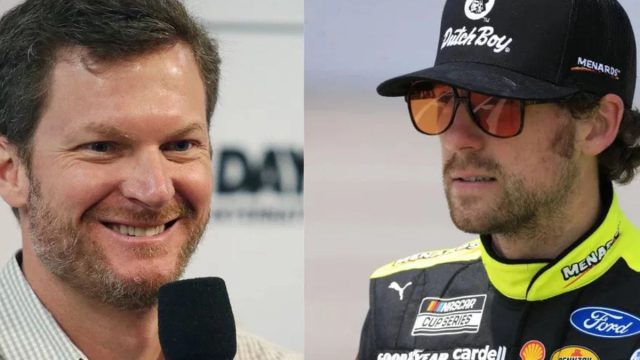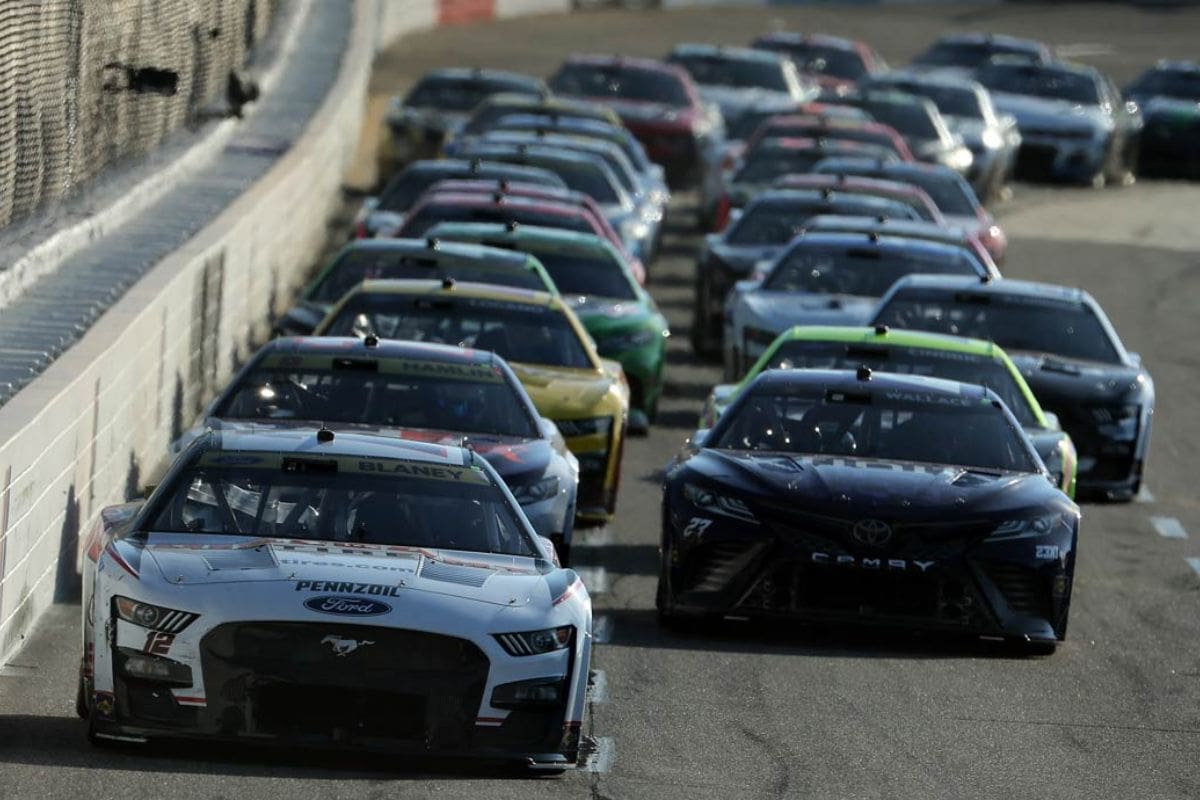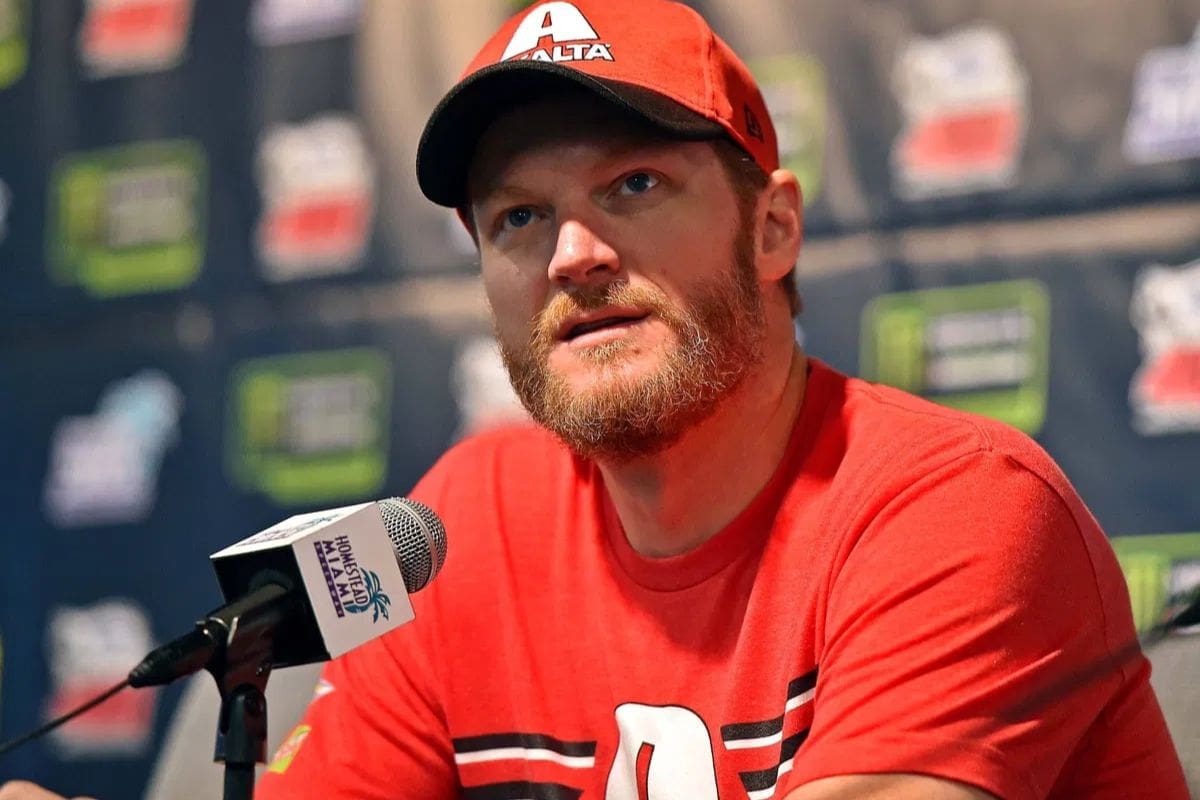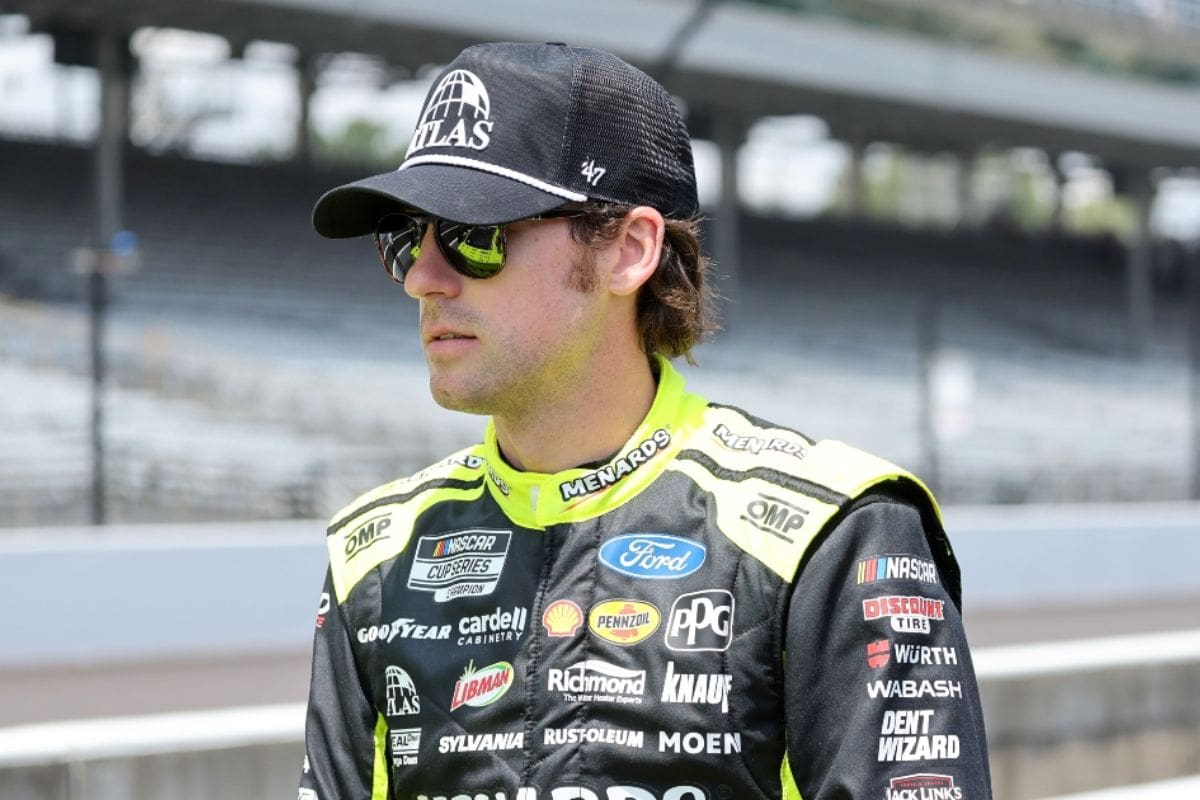Dale Earnhardt Jr. Challenges NASCAR’s Decision: Dale Earnhardt Jr.‘s recent critique of NASCAR’s decision to disqualify Ryan Blaney has ignited a notable debate regarding the fairness of the regulations governing damaged vehicles. By showing the potential pitfalls of enforcing such rules, Earnhardt Jr. raises crucial questions about competitive integrity and the necessity for flexibility within racing dynamics. This situation broader discussion about the balance between safety and strategy in motorsports. In the sport consider the implications of such a ruling, one must ponder: what changes could foster a more equitable environment for all competitors?
Key Highlights
- Dale Earnhardt Jr. criticized NASCAR for its rigid rules, arguing they unfairly penalize drivers like Blaney under competitive circumstances.
- The contested rule mandates immediate retirement for damaged cars, raising concerns about its impact on race dynamics and team strategies.
- Jr. advocates for a balanced approach to repair timelines, emphasizing the need for thoughtful regulations that maintain vehicle integrity and fairness.
- The emotional toll of Blaney’s disqualification on his performance and crew morale highlights the broader implications of strict regulations in NASCAR.
- There are calls for greater consistency in rule enforcement to ensure fair competition and enhance athlete morale within the sport.
Controversy Surrounding NASCAR’s Decision
The controversy surrounding NASCAR’s decision to disqualify Ryan Blaney has ignited a debate within the motorsport community, emphasizing the complexities of race regulations and their enforcement. The incident at Watkins Glen, where Blaney, the defending NASCAR Cup Series champion, was disqualified following a wreck on Lap 1, raises critical questions regarding the consistency and rationale behind penalty assessments in high-stakes racing.
Critics, including prominent figures like Dale Earnhardt Jr., have voiced their discontent, arguing that the penalties appear disproportionate to the circumstances surrounding the incident. The disqualification of a fan-favorite like Blaney not only affects the competitive landscape but also has broader implications for viewer engagement and the sport’s integrity.
Disqualification is a severe sanction, often reserved for egregious violations, yet the context of a race-ending accident complicates the narrative. Moreover, this scenario highlights the inherent tension between enforcing regulations designed to promote fairness and the subjective interpretation of those rules in real-time racing situations.
NASCAR’s governance relies on a complex set of guidelines that must be implemented uniformly, yet the variability in incidents can result in perceived inequities. The community signals a demand for clarity in these regulations, as stakeholders seek confidence that the rules will be applied judiciously and consistently.
Ryan Blaney’s Reaction and Criticism
Following the disqualification at Watkins Glen, Ryan Blaney expressed his frustration with NASCAR officials, particularly regarding their decision to deny him the opportunity to repair his damaged car. Blaney articulated his discontent by questioning the rationale behind the officials’ determination that his vehicle was beyond repair. He remarked, “Give us a chance to fix it, how are they going to dictate if we’re done or not?” This statement encapsulates the tension between drivers seeking autonomy in their race strategies and the regulatory framework imposed by NASCAR.
“Give us a chance to fix it, how are they going to dictate if we’re done or not? They have no idea the damage. They said because I couldn’t drive it back to the pit box we’re done, but if you have four flats you get towed back to the pit box, you can’t drive it back.”
“So, I don’t know what’s going on, why they won’t even give us a shot to work on it, but I don’t agree with it.”-(ryan blaney)
Blaney’s remarks highlight a fundamental friction in the sport: the balance between driver independence and the enforcement of safety regulations. His inquiry into the reasoning behind NASCAR’s decision reflects a broader concern among drivers regarding their agency in the competitive landscape.
Dale Earnhardt Jr.’s Perspective
Expressing a subtle viewpoint on the recent disqualification of Ryan Blaney, Dale Earnhardt Jr. emphasized the need for a balanced approach to NASCAR’s repair regulations.
In a landscape where competitive integrity is paramount, Earnhardt’s comments reflect a critical analysis of how current rules impact teams’ operational capabilities. He articulated concerns regarding the frantic pace imposed by the existing regulations, which he believes compel teams to rush repairs. This urgency can lead to cars returning to the track inadequately prepared for the demands of racing.
“With the current rule there is also no need for elaborate ‘crash carts’ and overloaded haulers full of parts and pieces. I do think there is a middle ground.”
“The clock has teams rushing repairs and sending cars back on the track in dire need of more repairs.”-(dale jr.)
With the current rule there is also no need for elaborate "crash carts" and overloaded haulers full of parts and pieces. I do think there is a middle ground. The clock has teams rushing repairs and sending cars back on the track in dire need of more repairs. These hurried repairs…
— Dale Earnhardt Jr. (@DaleJr) September 16, 2024
Moreover, Earnhardt pointed out the inefficiencies associated with the reliance on elaborate “crash carts” and fully filled with components, suggesting that such practices are symptomatic of a rule set that may require reevaluation.
His assertion that there exists a “middle ground” highlights the necessity for a thoughtful discourse surrounding the regulations that govern repair timelines and vehicle integrity.
Explanation of the Contested Rule
Dale Earnhardt Jr.’s critique regarding the strains of NASCAR’s repair regulations, understanding the specific rule that has sparked controversy becomes vital. The contested rule mandates that any car unable to drive back to the pit box is immediately retired to the garage, therefore concluding its participation in the race. This policy, rooted in safety considerations, aims to prevent potentially hazardous situations on the track.
- Immediate Retirement: Cars that cannot self-navigate to the pit are disqualified from the race.
- Safety Focus: Designed to mitigate risks associated with damaged vehicles.
- Criticism of Rigidity: Opponents argue that the inflexibility of the rule undermines competitive integrity.
- Impact on Teams: Teams face considerable tactical challenges when a car must retire prematurely.
While the rationale behind this rule is commendable, as it prioritizes driver and spectator safety, the implications of its strict enforcement can lead to contentious outcomes. Critics suggest that the rule lacks nuance, failing to take into account situations where a car might be temporarily incapacitated yet still possess the capacity to return with minimal repairs.
Dale Jr.’s stance highlights the tension between ensuring safety and maintaining competitive fairness. As the NASCAR community grapples with the balance between these two priorities, it remains important to evaluate the rule’s effectiveness and its broader implications on race dynamics.
Blaney’s Frustration and Incident Details
Blaney and his frustration over the incident that led to his early withdrawal from the race, emphasizing the emotional toll it took on both him and his team. The collision, which occurred during a critical phase of the event, not only disrupted his competitive momentum but also placed a notable strain on his crew’s morale.
Blaney’s disappointment was compounded by the feeling that the circumstances surrounding the incident were avoidable, a sentiment that resonates deeply within the environment of NASCAR.
“I don’t even know what happened honestly, stacked up, I caught someone on the left front and it completely broke the steering arm. I don’t know if we could have fixed it but that’s the frustrating part, just don’t even give us a chance you just end our day and you’re not letting us get to look at it before it’s in the garage? That just, stinks.”-(blaney)
In detailing the event, Blaney noted that the contact with another vehicle was not an isolated mishap but rather the result of a series of tactical decisions made under duress. This highlights the inherent complexity of race dynamics, where split-second choices can lead to far-reaching consequences.
His frustration was not solely aimed at the incident itself but also at the broader implications for the championship standings, as each race is a critical opportunity for points accumulation.
Blaney’s remarks highlight a recurring theme in NASCAR—how rules and decisions can influence not just the outcome of a race but also the psychological health of the competitors.
His experience serves as a poignant reminder of the delicate balance between competitive spirit and the harsh realities of motorsport, prompting ongoing discussions about the fairness of regulations and their impact on the athletes involved.
News in Brief: Dale Earnhardt Jr. Challenges NASCAR’s Decision
The disqualification of Ryan Blaney shows considerable tensions within NASCAR regarding the enforcement of repair regulations. Dale Earnhardt Jr.’s critique emphasizes the need for a reassessment of such rules to preserve competitive integrity. A more flexible approach could improve tactical options for teams while ensuring that racing dynamics are appropriately considered. Open dialogue between drivers and officials may contribute to a more equitable framework, ultimately benefiting the sport and its stakeholders.
ALSO READ: Dale Earnhardt Jr. Uncovers NASCAR Charter Failures: Why Major Teams Are Walking Away



